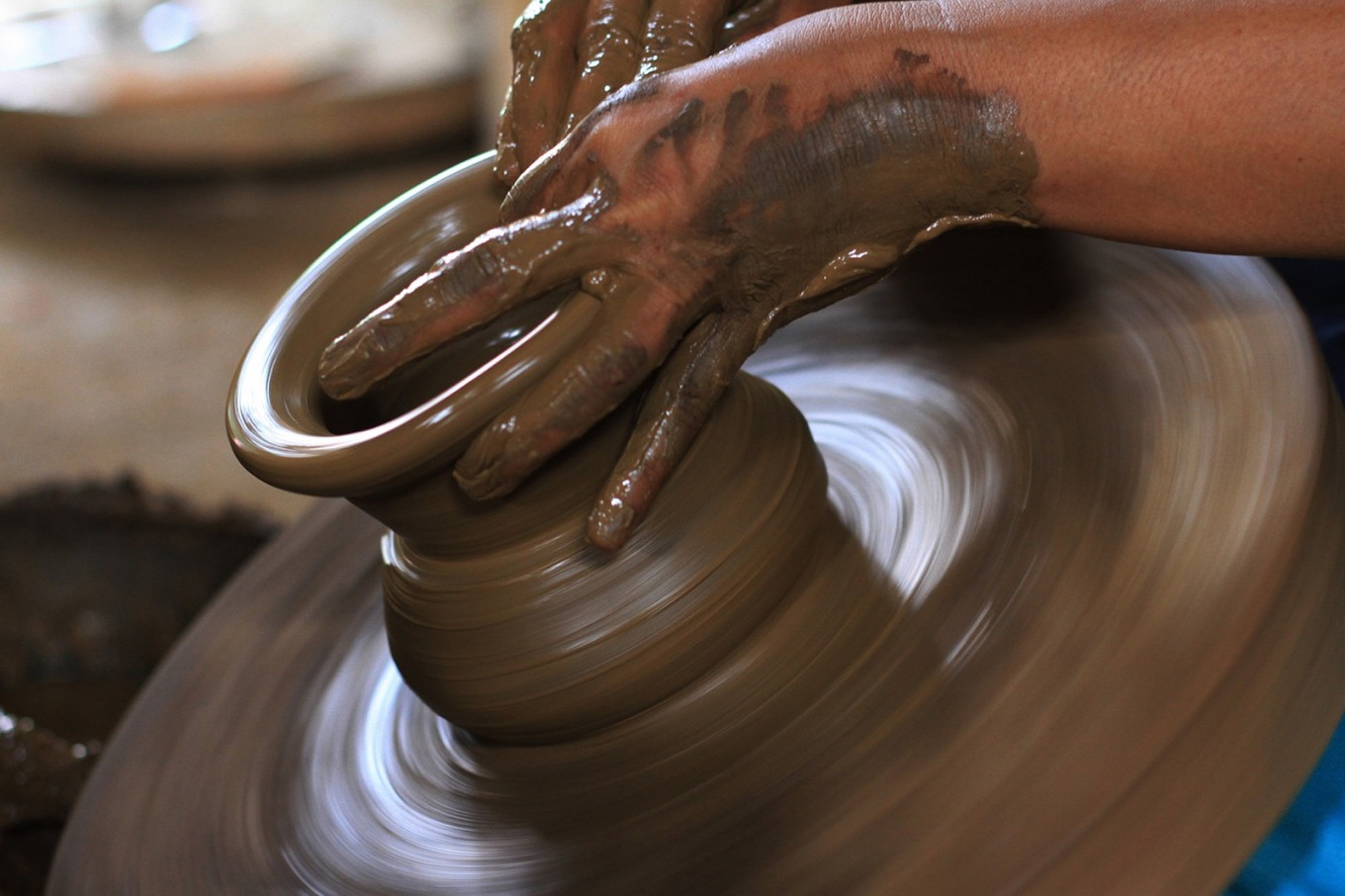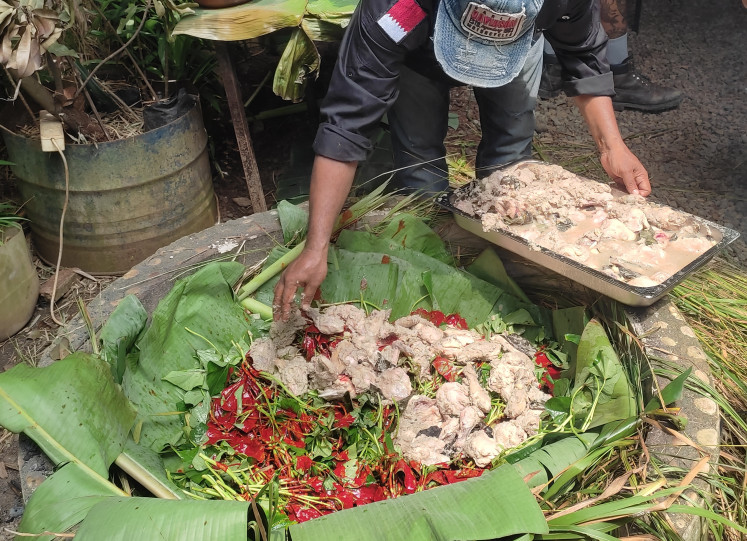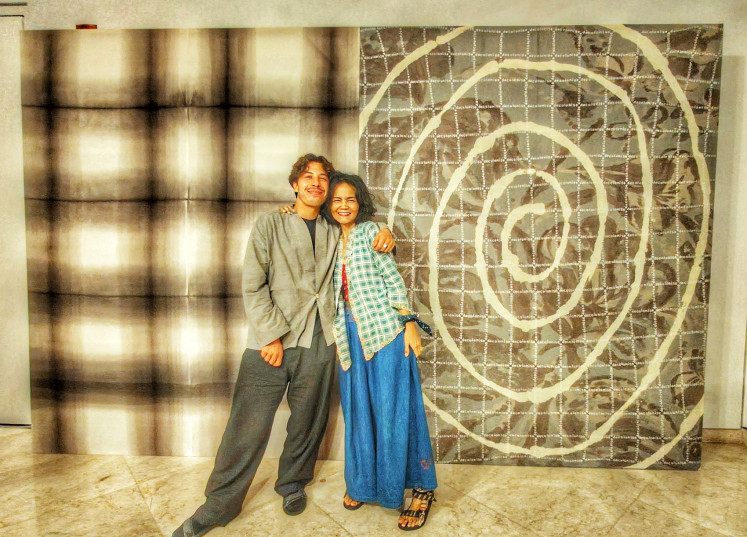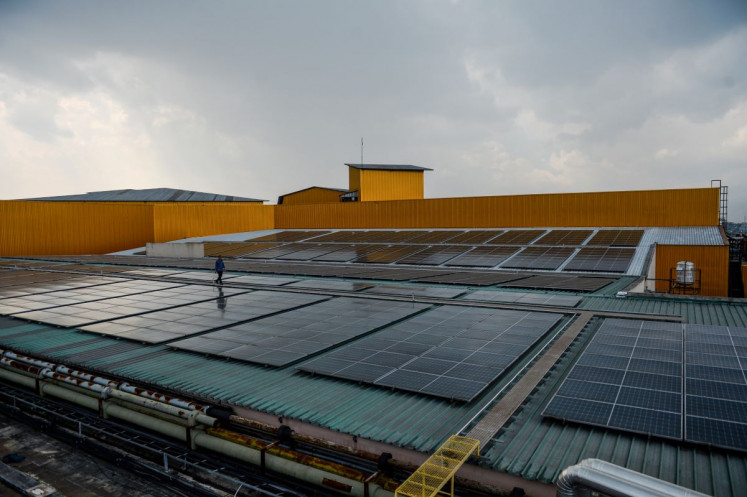Popular Reads
Top Results
Can't find what you're looking for?
View all search resultsPopular Reads
Top Results
Can't find what you're looking for?
View all search resultsKlaten’s unique pottery technique spins on
Change text size
Gift Premium Articles
to Anyone
S
itting to the side of a slanted potter’s wheel, the woman's hands skillfully shape the clay atop a spinning base. Simultaneously, her foot moves a rope cast over a bamboo support structure and around the axel of the wheel. It is the continuous movement of her foot that spins the wheel head.
When the turning is over, the clay has been transformed into functional shapes like bowls, cups, plates, jugs, cobek (mortar) and vases.
This earthenware turning technique is known as gerabah putaran miring (sideways pottery turning), in which the artisan sits on the floor with their body positioned sideways to a slanted pottery wheel locally called perbot. The circular wooden base of the wheel is slanted at around a 45-degree angle to the floor. The turning technique is considered unique and has been passed down through the generations in Pagerjurang hamlet of Melikan village, Wedi district, Klaten regency, Central Java.
The technique is said to have existed in Pagerjurang 300 years ago, during the era of Javanese Islamic cleric Sunan Bayat, also known as Sunan Pandanaran.
Read also: Klipoh, under the radar pottery village in Magelang
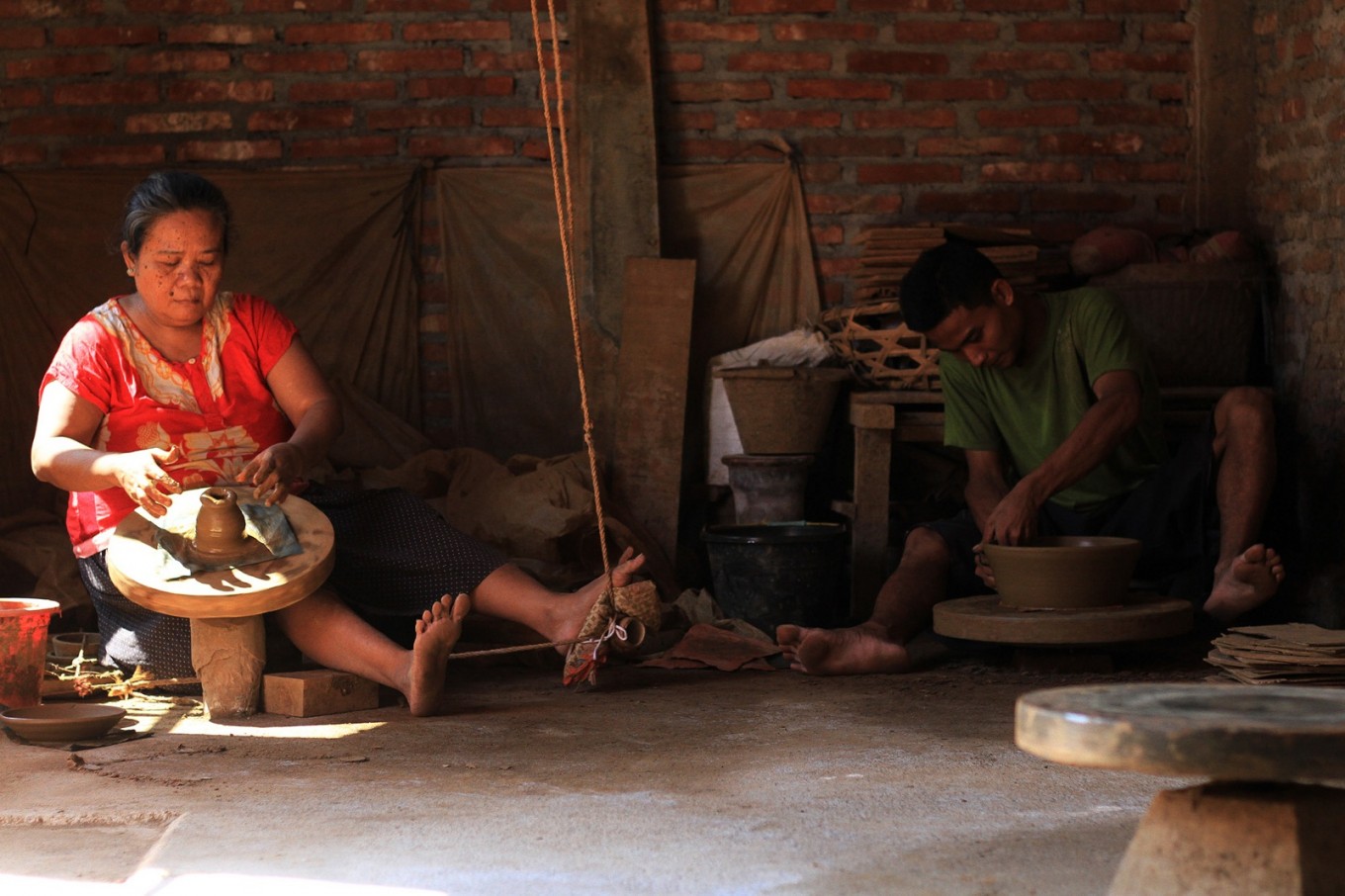 According to Melikan village secretary, Sukanta, the pottery artisans in Pagerjurang at the time were women donning kebaya (traditional Indonesian female attire) and kain jarik (traditional Javanese cloth), while the men were tasked to search for clay.(JP/Ganug Nugroho Adi)
According to Melikan village secretary, Sukanta, the pottery artisans in Pagerjurang at the time were women donning kebaya (traditional Indonesian female attire) and kain jarik (traditional Javanese cloth), while the men were tasked to search for clay.(JP/Ganug Nugroho Adi)
According to Melikan village secretary Sukanta, the earthenware artisans in Pagerjurang at the time were women who wore kebaya (traditional female blouse) and kain jarik (traditional Javanese cloth, worn by wrapping), while the men were tasked with searching for clay.
He added that it was Sunan Bayat's idea to slant the wheel head down for ethical reasons, as the cleric considered it indecent for a woman to spin the pottery with straddled legs like men.
"Since then, the pottery technique used here has been known as gerabah putaran miring," said Sukanta, himself an artisan.
The women currently wear long pants or long skirts instead of kain jarik when turning pottery.
"The sideways turning technique is used to make small and fine pottery, such as dinner sets, fruit plates, jugs, bowls and teapots, which is the task of women," said one of the artisans, 45-year-old Lastri. She inherited the pottery-making skills from her grandfather and parents, and now continues the family business with her husband.
Read also: Bantul's rustic pottery in demand in Europe
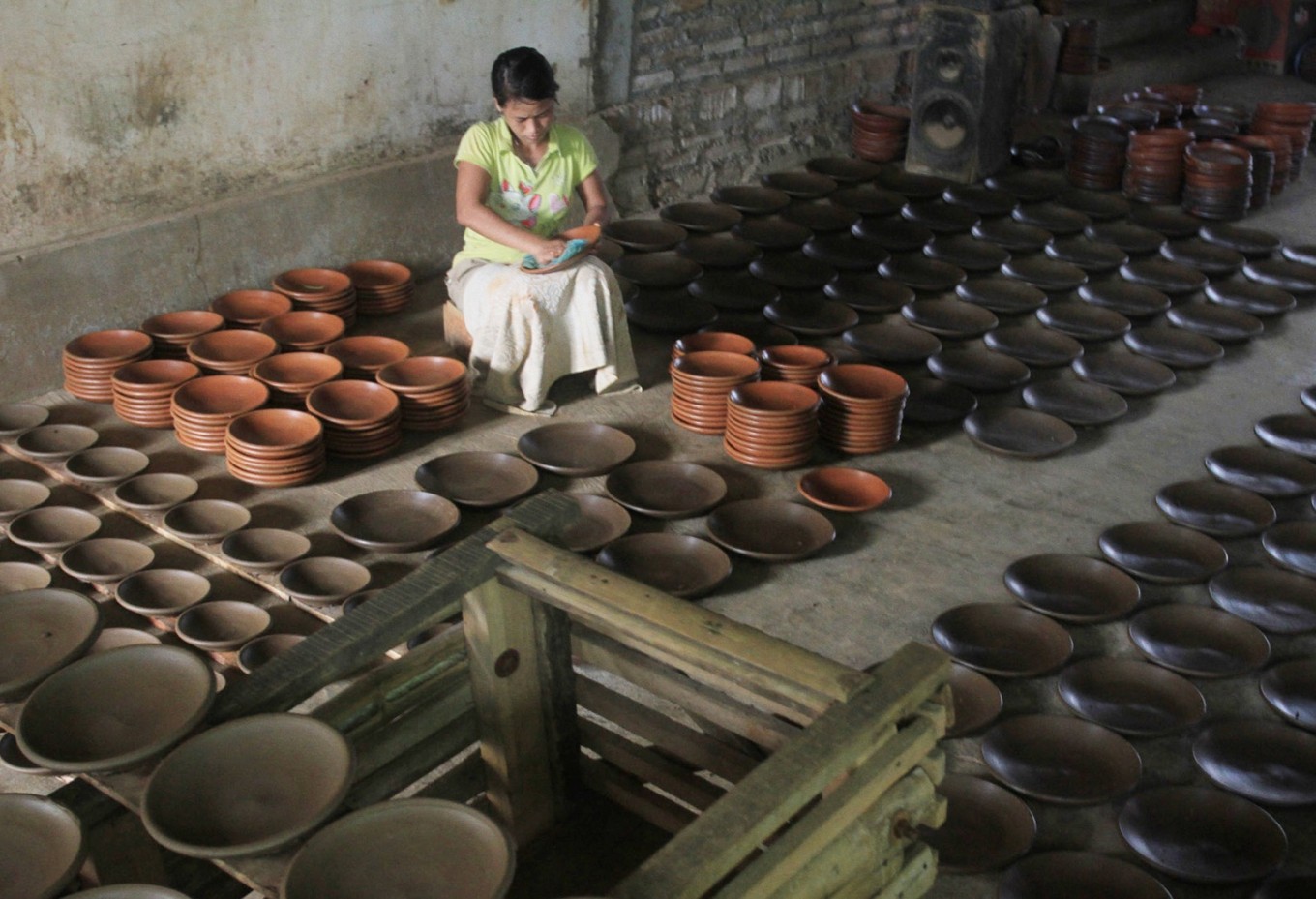 An artisan prepares pottery that will be burnt.(JP/Ganug Nugroho Adi)
An artisan prepares pottery that will be burnt.(JP/Ganug Nugroho Adi)
Meanwhile, the men are tasked to create earthenware that are bigger and thicker, such as flowerpots and gentong (large storage vessels), using the gerabah putaran datar (flat pottery turning) technique. The hamlet is home to at least 200 earthenware home industries, which are famous for using natural glazes.
"[The pottery] are fired for 24 hours using wood. Afterwards, we have to wait another 12 hours before we take out the pottery," said 50-year-old Sarmidi, adding that the firing process made Pagerjurang pottery safe for cooking, eating and drinking.
The hamlet's earthenware business did not make much money for the artisans though, he said. People today preferred using tableware and storage containers made of plastic or aluminum instead of clay.
"Currently there are also many modern pottery products, either in their technique or design. But you can only find traditional pottery here, of which we are very proud," Sarmidi added. (kes)

